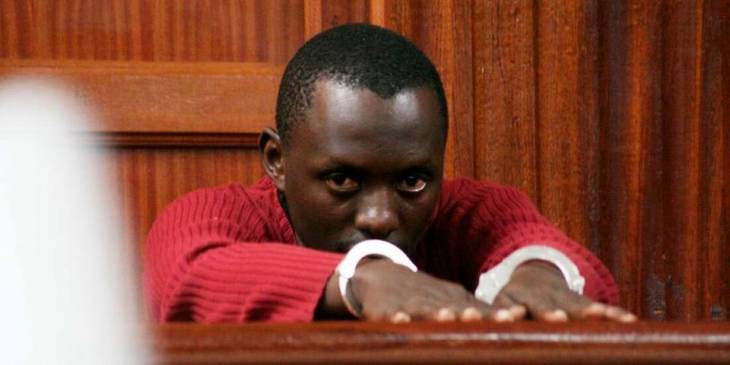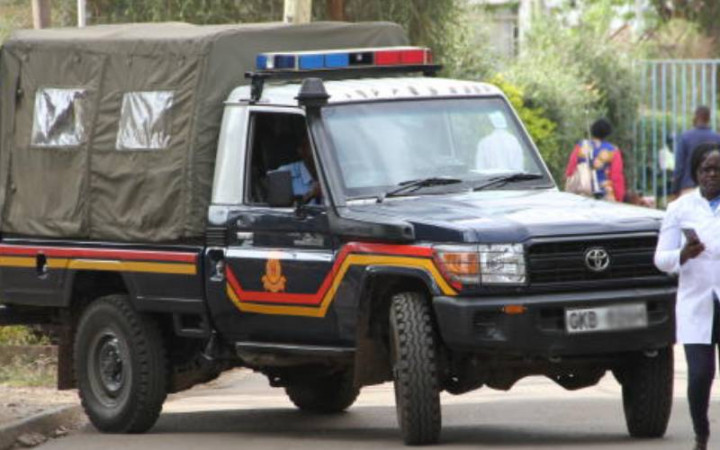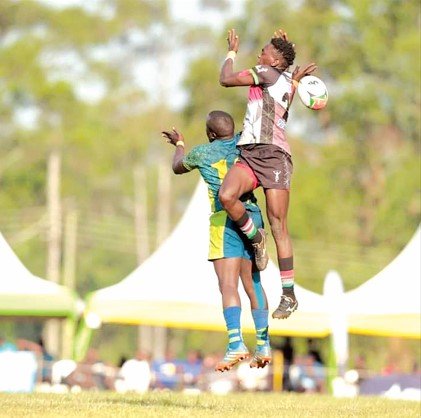How police laxity led courts to overturn terror suspect’s sentence

When terror suspect Elgiva Oliacha was arraigned in court in October 2011, his response to each of the nine counts was in English, “it is true” because he accepted the facts as true.
His determination to maintain his plea was obvious and unequivocal and when the matter came before Justice Ngenye Macharia on October 28 the same year, Oliacha reiterated his plea of guilty.
Later, when the court moved to Nairobi Area police where the deadly exhibits had been kept, he once more admitted the facts, stating: “The facts are correct.” On three different occasions, he pleaded guilty to the charges.
On the basis of his response to these facts confirming their correctness, the court entered, one more time an own plea of guilt in all the counts. Oliacha, again, did not wish to mitigate.
He had been arrested following the October 24, 2011 terror attack at Kaka Bus stage in Nairobi in which two people were seriously injured.
Oliacha, who has been missing since October 28 when he was released from Kamiti Maximum Prison, had been charged with nine counts including two of causing grievous harm to the duo, engaging in organised criminal activity, four counts of being in possession of a firearm, and two counts of being in possession of ammunition without licence.
He was then sentenced to life imprisonment for the grievous harm, 15 years for engaging in organised criminal activity, and seven years for being in possession of ammunition without licence. The sentences were to run consecutively.
Life sentence
He, however, ended up serving only 10 years after the life sentence was reduced since prosecution did not present a P3 form in court to confirm the injuries sustained by the two victims.
A court can only be assisted by medical evidence in coming into conclusion on the nature and classification of the injury, through the P3 form. After he was sentenced to life, the aggrieved Oliacha moved to the High Court to appeal on grounds that his plea of guilt was not unequivocal and that the sentences were excessive.
Justice Msagha Mbogholi, however, ruled that the procedure for plea taking was followed and that Oliacha understood and admitted all the counts. He, however, ruled that the sentences run concurrently since the offences were committed in the same transaction.
Still aggrieved by this, he further appealed and contended that without treatment notes and P3 form in support of the charge of grievous harm suffered by the victims, the judge erred in failing to find that the two counts were not proved.
Oliacha argued that the Trial Magistrate failed to explain to him the essential ingredients of the charges of grievous harm, for him to appreciate their seriousness and the sentences they would attract.
Through his lawyer Prof Hassan Nandwa, Oliacha pointed out that without the P3 forms, the alleged injuries to the complainants were not proved.
Under the Evidence Act, an allegation must be proved by evidence, otherwise it would be inadmissible.
The degree of injury of the complainants could only be classified by a medical practitioner after physically examining the victims. And a police officer cannot purport to assess the extent of injury.
During the court session, the prosecutor informed the court that the investigating officer was unable to obtain P3 forms to confirm the extent of their injuries.
“But the officer, upon visiting the victims at the Kenyatta National Hospital where they were undergoing treatment, observed that the first complainant had suffered fractures of the knee cap, rib, ruptured pelvis, and soft tissue injury to the head; that the second complainant suffered abdomen injury and broken arm,” read court documents.
Prosecution further outlined the injuries suffered by the complainants. The prosecutor qualified the source of information, saying: “We could not obtain the P3 forms as yet, as both complainants are likely to be in hospital undergoing treatment for some time from today.”
“Investigating officer visited them in hospital and confirmed the injuries,” he added.









